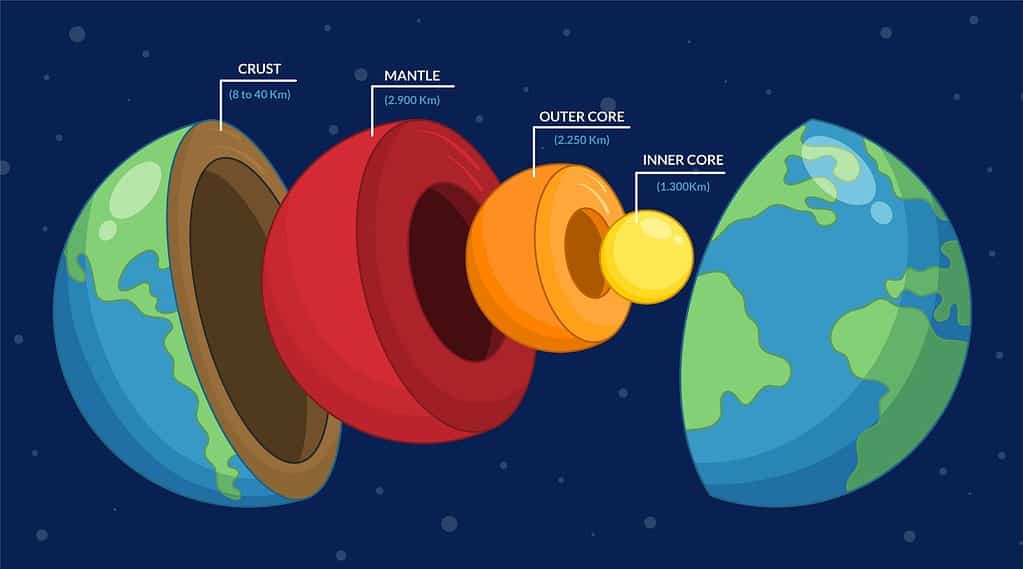In 2004, a team of researchers made a pretty surprising discovery: the Earth’s inner core, the deepest part of our planet’s structure, appears to be spinning independently from the rest of the solid Earth. The inner core, the researchers then reported, rotates in the same direction as Earth, but faster. In fact, for geological motion, the speed was very fast, enabling the core to gain a quarter-turn on the planet as a whole.
But recent research suggested that the core’s movement may be slowing down — and now, another surprising study found that the rotation may actually be reversing.

Most of what we know about the Earth’s inner core, much like what we know about the rest of the Earth’s internal structure, comes from seismic waves. When an earthquake happens, it sends ripples across the planet — and if the earthquake has enough energy, it can be recorded all around the world. The waveform and travel time of seismic waves from earthquakes that have passed through the Earth’s inner core can be used to “peer” inside the planet.
This isn’t just used for the core — the mantle and the crust are also studied with this approach. That’s how we learned, for instance, that the Earth’s core is split into two parts: a solid inner core that’s separated by the rest of the solid Earth by a “liquid” outer core. So the inner core has some degree of freedom to spin, but why is it spinning in the first place?
Researchers believe that the magnetic field generated in the outer core triggers this rotation, and the gravitational and friction effects tend to balance it and slow it down. This rotation also has an effect on seismic waves that reach the core.

Yi Yang and Xiaodong Song, two researchers from Peking University, Beijing, China, analyzed seismic waves from the early 1990s, comparing them to waves analyzed in the 1960s and 1970s. They found a consistent pattern that suggests that inner core rotation has recently paused. In fact, since around 2009, the rotation seems to have completely stopped.
The first time researchers found evidence that the Earth’s inner core was rotating (and faster than the rest of the Earth), it was striking. Subsequent research confirmed this, but the full range of mechanisms that affect this process is still poorly understood.
Yang and Song interpret this as a part of a seven-decade oscillation with a previous turning point occurring in the early 1970s. They believe the rotation may now be reversing. The observations also fit with changes in geophysical observations at the Earth’s surface, such as the magnetic field and the length of day.
“These observations provide evidence for dynamic interactions between the Earth’s layers, from the deepest interior to the surface, potentially due to gravitational coupling and the exchange of angular momentum from the core and mantle to the surface,” the researchers conclude in the study.
No doubt, there’s much about our planet’s structure we’ve still yet to learn. But the fact that we’re able to “see” so deep into the Earth is remarkable in itself. A better understanding of the processes and dynamics of this moon-sized iron blob we call our inner core could yield more clues to the processes behind the Earth’s magnetic field — the force that ultimately protects life on Earth from all sorts of harmful radiation. We don’t really understand how this works, but we’re getting closer.
The study was published in Nature.






